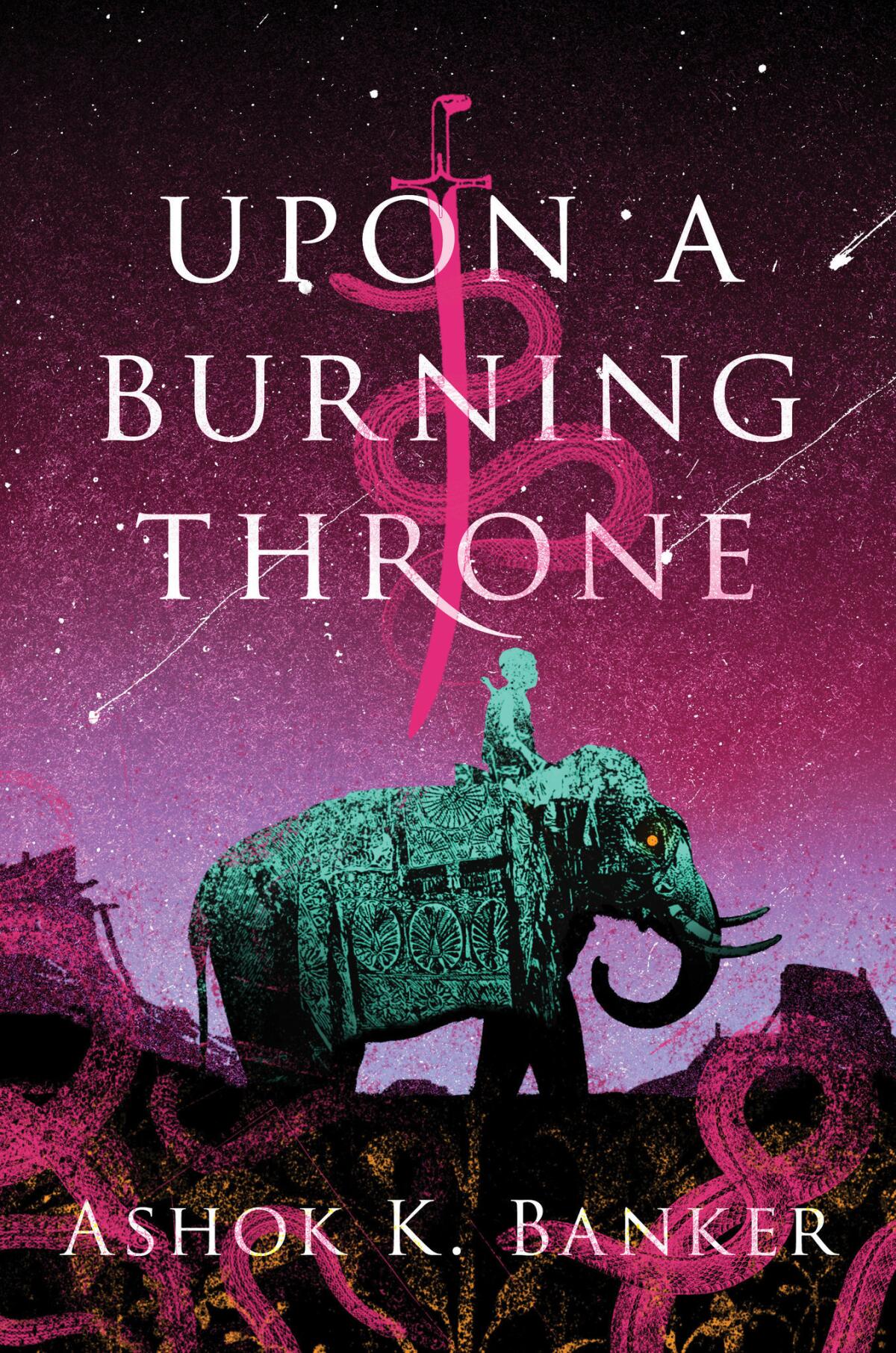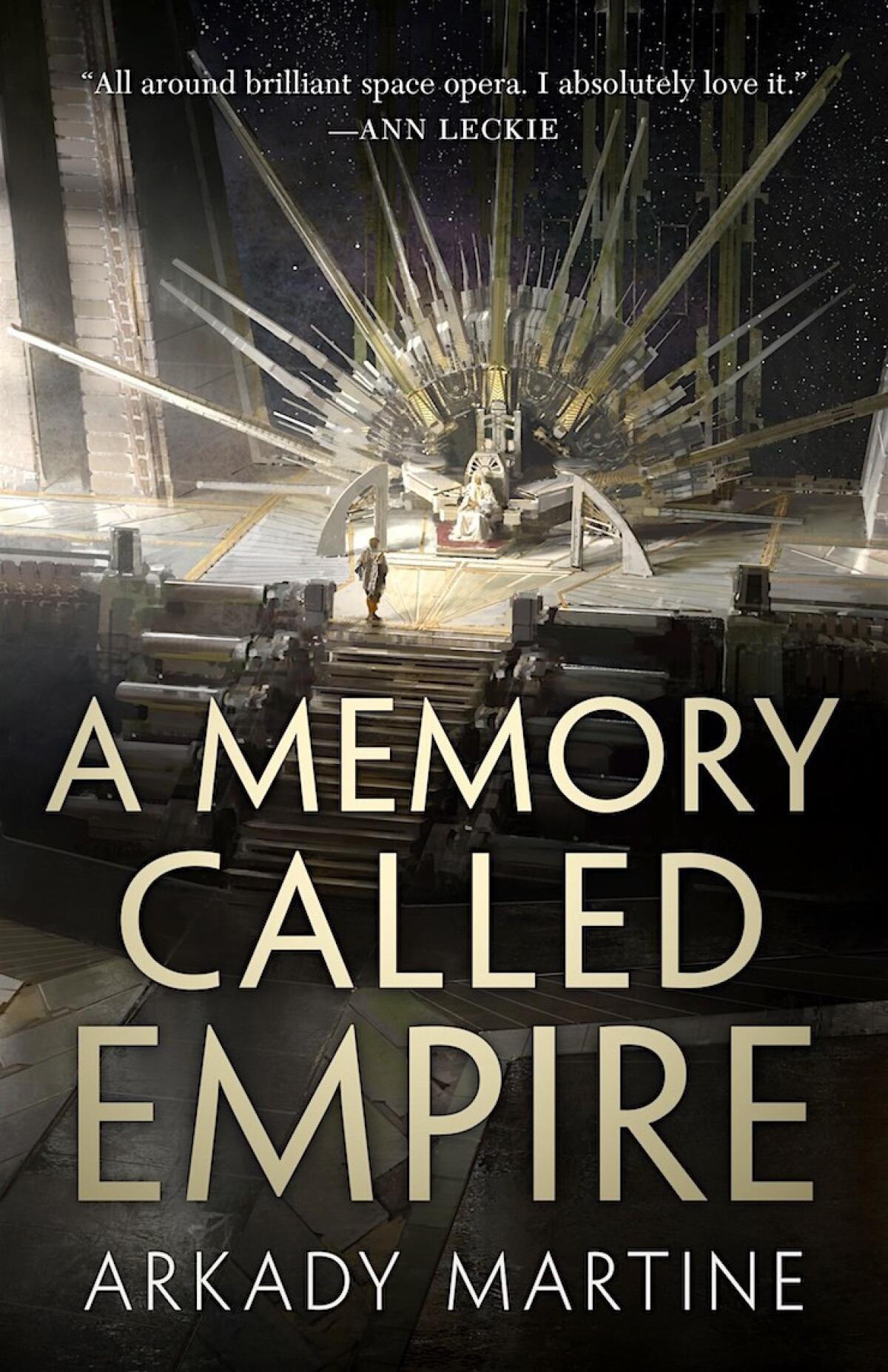Stellar sci-fi: India’s ‘Game of Thrones,’ killer cars and the Teixcalaanli empire
- Share via
Some of the best new science fiction stories explore the near and far future, the recent past and an alternative world where gods walk among us. For our latest roundup of sci-fi novels, we have assembled a diverse collection, with a little something for everyone. Like to read a story that explores growing up as a geek in the 1980s? Perhaps you’d prefer a dialogue on ethics and examination on near-future tech? Or maybe an intricate science fiction world murder-mystery? There’s even the beginnings of a challenging epic fantasy pulling from India’s myths. Check out our suggestions for sci-fi to read this month.
“The Passengers,” John Marrs (Berkley: 352 pp., $26)
In the ever more connected world, even a refrigerator or wristwatch can be linked to the internet. John Marrs asks the question: What happens when we all put our lives in the hands of fully automated, always connected machines? In this story set in the not-so-distant future, self-driving vehicles have become commonplace. Heavily regulated, they are made compulsory to reduce accidents and combat pollution.

Then eight people become trapped in their autonomous autos, hacked by an extremist who plans on killing all but one in horrible accidents. Victims include a celebrity, a young pregnant woman, a disabled war hero, a husband and wife (in separate vehicles), an immigrant, an abused wife fleeing her husband and a suicidal man. The hacker leaves it up to a public panel — through social media — to decide who should live.
“The Passenger” is a fast-paced thriller that offers a discourse on morality and ethics, although this does feel a little heavy-handed at times. The social media audience in the book is an aggressive, racist, opinionated group whose members lack any real social niceties — something that may resemble current-day internet trolls.
Marrs excels at thrilling readers by creating a real sense of tension and delivering a believeable, harsh criticism of modern society through this dark and entertaining story.
Driving in California will never feel quite the same.

“Upon a Burning Throne,” Ashok K. Banker (John Joseph Adams: 688 pp., $26)
Ashok K. Banker is a pioneer of modern Indian fantasy, retelling the country’s classic mythology fables. “Upon a Burning Throne” is the first in a series inspired by the Sanskrit epic “The Mahabharata.” The ancient Indian tale of the struggle two princes face during war, “The Mahabharata” is considered the longest poem ever written, and its origin dates back more than 2,500 years. “Upon a Burning Throne” has been called “the Indian ‘Game of Thrones.’”
The world of the “Burning Throne” is one where gods and demons walk among mortals. As the story begins, the emperor has died. There are no guarantees for the next in line, and a successor must pass the “test of fire” by sitting on the throne. It’s a fatal choice for the unworthy, who are incinerated by the magical seat of power. Two baby princes — Adri and Shvate and a third “challenger” baby girl from another kingdom survive the test. Despite her success, those in power decide that the girl isn’t suitable, a decision that leads to all-out war.
“Burning Throne” isn’t a quick read. More than 650 pages long with depictions of sweeping mountain ranges, vast deserts, lush forests and cities full of colorful people, it’s a vividly evocative, if long and at times slow, journey. The structure is unusual, every 20 to 30 pages the perspective shifts to a different narrator, which can be confusing and sometimes interrupts the pace. Time can also jump forward during these shifts; sometimes years might have passed. Not the easiest book to read and perhaps unsuited to the casual reader. Yet for those looking for something a bit more substantial, a story that promises a grand and epic scale exploring a non-Western culture in a vivid setting, “Upon a Burning Throne” is ideal — just be prepared for something different.

“A Memory Called Empire,” Arkady Martine (Tor: 464 pp., $25.99)
The first in a new “space opera” series, Arkady Martine’s debut novel, “A Memory Called Empire,” follows newly appointed Ambassador Mahit Dzmare as she hunts for her predecessor’s killer within the capital of the grand interstellar Teixcalaanli Empire. Investigations are made more difficult when she finds out no one wants to even admit that there was a murder committed. She must navigate the city’s deadly halls of power alone to uncover dangerous truths, fearful she may be next on the murderer’s list. At the same time her home, a small but fiercely independent mining station, faces annexation by the avaricious empire. But Mahit hides a secret, one so powerful it could destroy her home, or perhaps save it from annihilation.
At its heart, “A Memory Called Empire” is a murder-mystery, set within an intricate and detailed science fiction universe. These details are not just setting the scene, though; they are weaved imaginatively into the very fabric of the story, keeping the pace steady and avoiding any drawn-out exposition. This exquisite detailing includes the culture of the Teixcalaanli Empire, an ancient, deep and rich society of fashion, language, poetry and technology that feels alien to both the reader and Mahit herself. The juxtaposition between protecting one’s own “less sophisticated” identity against that of a seemingly overwhelming influence is one of the main themes. Should Mahit give in and allow herself to become “elevated” or should she protect her culture’s unique identity?
This is a compelling journey with a rich world and fascinating characters, a thoughtful look at colonization and cultural identity.

“One Word Kill,” Mark Lawrence (47North: 204 pp., $14.95)
“One Word Kill” is set in the 1980s and centers on 15-year-old Nick, who has discovered that he’s dying of leukemia. If that’s not enough, he’s also being followed by a man with strange abilities, while his new friend Mia is in grave danger. So Nick sets out to to save the girl, defy a knife-wielding maniac and a terminal illness, while maybe even bending the laws of physics.
A coming-of-age story that deals with the issues of serious illness and responsibility — along with a dialogue of the multiverse theory, the author accurately captures the feeling of growing up in the 1980s. It was a time before phones were smart — or even portable — and entertainment was rarely digital: role-playing games with paper, pencils and dice were endemic among the “geekier” teenagers, and Dungeons & Dragons reigned supreme. For those who grew up in this era, it offers a welcome reflection – an insight into the past for those who didn’t.
Despite being a book about teenagers, the story has a maturity that captures adult readers’ attention and doesn’t let go. The easy reading style and fast-pace belies the serious nature of the topics being examined.
Sign up for our Book Club newsletter
Get the latest news, events and more from the Los Angeles Times Book Club, and help us get L.A. reading and talking.
You may occasionally receive promotional content from the Los Angeles Times.






